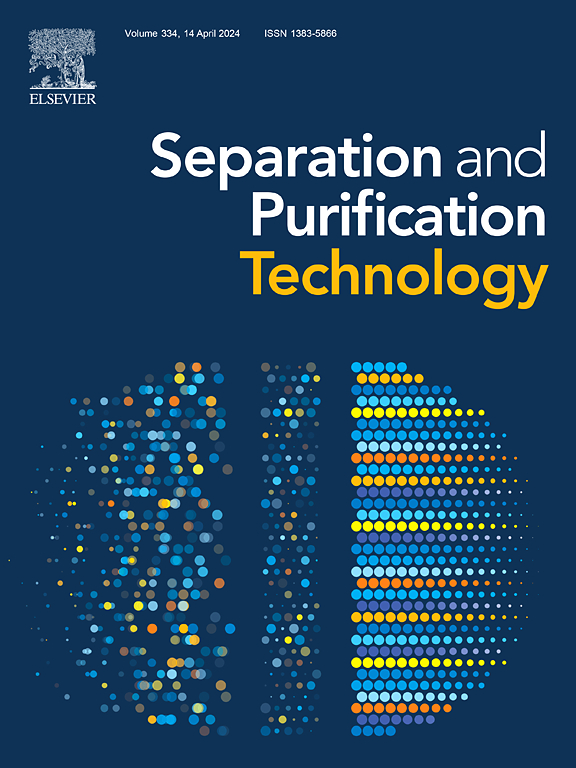光催化CO2还原金属-有机框架基材料的研究进展
IF 8.1
1区 工程技术
Q1 ENGINEERING, CHEMICAL
引用次数: 0
摘要
化石燃料的大量燃烧所造成的日益严重的环境污染和能源短缺已成为两大问题和最具争议的问题。利用阳光驱动的复合材料将二氧化碳(CO2)转化为其他增值化合物是一种有前途的策略,在缓解能源危机和解决环境问题方面发挥着关键作用。金属有机骨架(mof)因其结构可调、光催化活性强、活性位点丰富等特点,在CO2光还原体系中得到了广泛的应用。在CO2还原反应中,由于多种中间体和复杂的还原途径的参与,不同还原途径得到的还原产物各不相同,这使得合理调节MOF复合材料以针对不同碳质化合物的生成变得更加有趣。本文综述了MOF基复合材料光催化还原CO2的最新研究成果,并介绍了MOF材料的合成方法和形貌特征。此外,还概述了CO2分子在光催化剂上的吸附状态以及最终产物形成的可能途径。最后介绍了MOF光催化剂催化CO2还原体系的发展前景和存在的问题。希望本文能对mof基光催化剂的合理修饰和设计提供有价值的帮助。本文章由计算机程序翻译,如有差异,请以英文原文为准。


Insights into the metal–organic framework-based materials for photocatalytic CO2 reduction
The increasing environmental pollution and energy scarcity caused by the massive burning of fossil fuels have become the two major problems and the most controversial issues. The use of sunlight-driven composites to convert carbon dioxide (CO2) into other value-added compounds is a promising strategy that plays a pivotal role in alleviating energy crisis and solving environmental issues. Metal-organic frameworks (MOFs) are widely employed in photoreductive CO2 systems because of their tunable structures, excellent photocatalytic activity and abundant active sites. During the CO2 reduction reaction, the reduction products obtained from different reduction pathways are distinct duo to the involvement of multiple intermediates and complex reduction routes, which makes it more fascinating to rationally regulate the MOF composites to target the generation of different carbonaceous compounds. In this paper, we summarised the latest results of photocatalytic CO2 reduction by MOF-based composites and introduced the synthesis methods and morphological characteristics of MOF materials. Moreover, the adsorption state of CO2 molecules on the photocatalysts and the possible pathways experienced by the formation of the final products are outlined. Finally, the development prospects and still existing problems of the CO2 reduction system catalysed by MOF photocatalysts were presented. We hope that this paper can provide valuable assistance to researchers in the rational modification and design of MOF-based photocatalysts.
求助全文
通过发布文献求助,成功后即可免费获取论文全文。
去求助
来源期刊

Separation and Purification Technology
工程技术-工程:化工
CiteScore
14.00
自引率
12.80%
发文量
2347
审稿时长
43 days
期刊介绍:
Separation and Purification Technology is a premier journal committed to sharing innovative methods for separation and purification in chemical and environmental engineering, encompassing both homogeneous solutions and heterogeneous mixtures. Our scope includes the separation and/or purification of liquids, vapors, and gases, as well as carbon capture and separation techniques. However, it's important to note that methods solely intended for analytical purposes are not within the scope of the journal. Additionally, disciplines such as soil science, polymer science, and metallurgy fall outside the purview of Separation and Purification Technology. Join us in advancing the field of separation and purification methods for sustainable solutions in chemical and environmental engineering.
 求助内容:
求助内容: 应助结果提醒方式:
应助结果提醒方式:


